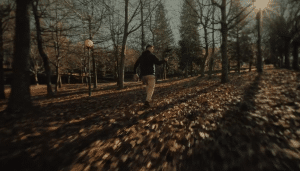Making a video is hard enough — making a good video is even harder. Here are 14 bad things you shouldn’t do while working on your video project.
There are so many things that can go wrong when you’re making a video, from the filming itself to the editing process. In this blog post, we discuss some of the most common video editing mistakes and ways to avoid or fix them.
Let’s dive in!
1. Ignoring Your Audience
When you don’t know who your audience is, you may lose your focus. As a result, your project won’t be as engaging and informative as it could be. Making a video “for everyone” doesn’t really work. Are you making a corporate video for potential customers? Or a family video for your relatives? These are very different projects, and that’s why it’s important to determine your target audience before you start shooting.
Solution: Define your target audience, and think about what they would like to see in your video. Consider their age, gender, interests, etc. This will help you come up with appropriate ideas for the content and style of your video.
2. Doing Too Much
Trying to cram too much information or too many ideas into one video will only make it confusing and unfocused. When you have too many things going on, the quality of your video suffers.
Solution: Choose one main idea or message that you want to get across, and make sure everything in your video supports that message. If you have multiple related ideas, consider making a series of shorter videos instead of one long one. Bonus: You’ll start to build a fan base for your video series!
3. Not Telling the Story
A good video tells a story that engages the viewer from beginning to end. Without a story, your video will be forgettable at best and confusing at worst. So before you start filming or editing, take some time to plan out the story you want to tell:
- What is the beginning, middle, and end?
- How do each of those stages relate to each other?
- What is the main point you want to get across?
Make sure your video has a clear narrative arc so that viewers will understand and remember your message.
Solution: Write a script — or at least a detailed outline — of your video before you start filming. This will help you stay on track and make sure your video has a clear beginning, middle, and end.
Take a look at this awesome storytelling example by Under Armour:
4. Sloppy Edits
When editing your video, put in the effort to do it right. This means being careful with your cuts, transitions, and overall flow. A well-edited video will be smoother and more enjoyable to watch; a video that’s been hastily put together will be choppy and full of editing flaws.
Solution: Edit your video slowly and deliberately. Watch it multiple times to make sure everything flows well and that there are no awkward pauses or abrupt cuts. If possible, get someone else to watch it and give you feedback.
5. Underestimating the Project
Editing a video takes time — often longer than it takes to shoot the footage in the first place. If you’re not prepared for this, you may end up rushing through the process, which will stress you out. This can lead to sloppy editing, which, as we know, will result in a poor-quality video. You’ll have a better-quality end result if you take the time to get it right.
Solution: Start working on your edit early enough, so you don’t have to hurry. If you can, give yourself twice as much time as you think you need. This will help ensure a well-edited video.
6. Using Copyright-protected Footage
If you use copyrighted content in your video without permission, you could be sued — even if you give credit to the original creator. At best, your video will be removed from YouTube, but be aware that you may face criminal charges for copyright infringement.
Solution: There are a few ways to get around this issue. First, you can check to see if the footage is in the public domain. If it is, then you’re free to use it without permission. Second, you can purchase stock footage from a number of different sources. Websites like Videvo sell copyright-free clips that you can use in your videos. Third, you can create your own footage. Where feasible, this is often the best option, as it ensures that you won’t encounter any legal issues down the road.
7. Overusing Effects and Filters
When you’re first starting out, it’s tempting to try and include as many different effects and transitions as possible. However, this can often make your video look cluttered and confusing. Start with the basics and only add more complex elements once you’ve mastered the basics.
Solution: Use effects and filters sparingly, and only when they enhance the look of your video. Avoid using them just for the sake of using them.
8. Improper Lighting
Lighting is one of the most important aspects of video production. If your video is too dark or too bright, it will be very difficult to watch.
Solution: Make sure you have the right lighting before you start shooting your video. If possible, shoot during the day or in a well-lit room. Make use of various light sources, such as lamps, overhead lights, and natural light. However, you should avoid shooting in direct sunlight. The harsh light can create shadows and glare that will make your video look less than professional.
Here’s a handy tutorial on making the most of your lighting resources:
9. Bad Audio
Many people focus solely on the visual aspects of their videos and neglect the audio side of things. However, poor audio quality can make your video sound amateurish and difficult to follow, no matter how good the visuals are.
Solution: Invest in good microphones and record in a quiet place to help ensure clear audio for your video. If that’s not possible, you can definitely improve things during post-production stage. Most video-editing software, like Movavi, includes audio-editing tools, so it shouldn’t be a problem to remove noise or tweak the volume.
10. Missing Titles and Graphics
Titles and graphics help viewers understand what they’re watching and give them an idea of what to expect. Without these elements, your video may not communicate all that you want it to. Titles and graphics can help viewers understand your video and remember your message. They can also add interest and visual appeal, so make sure you take advantage of these tools when you’re editing your videos.
Solution: Add titles and graphics to your video. Make sure they’re clear and easy to read. Consider using animation or motion graphics for your titles – check out tools like Openshot and explore the opportunities to create custom titles or use a template.
A good example of the effective use of visuals and captions are some of TedEd’s educational videos
11. Too Long or Too Short
Videos that are too long will lose viewers’ attention, while those that are too short may not communicate all the information you want to convey. Finding the right balance is key. Watch your video after you’ve edited it and see how it feels. If it’s too long, consider cutting out the footage, or break it into two parts. If it’s too short, consider adding footage or graphics.
Solution: Figure out how long your video needs to be to effectively communicate its message. This will vary depending on the type of video you’re making. Test it on a friend or colleague to get an independent opinion.
12. Using Shaky Footage
Shaky video is one of the most common problems in amateur video creation. It’s also one of the most noticeable and off-putting problems. Shaky footage is very hard for viewers to watch. This can be especially true if you’re shooting with a handheld camera.
However, 28 Weeks Later proved how shaky video can be effectively used in contrast with steady footage:
Solution: Use a tripod whenever possible. This will help keep your camera steady and avoid shake. If you’re hand-holding your camera, keep your elbows close to your body and brace yourself against something solid. You should also avoid zooming in and out while you’re filming; zoom before you start recording, or after you stop. Alternatively, you can use a stabilization tool in post-production like Videosoftdev.
13. Bad Framing
Framing is the process of choosing what to include and exclude in your shot. Poor framing can make your video look amateurish, so make sure your framing is clean and well-composed.
Solution:
- Make sure the camera is level with whatever you’re filming. This will ensure that your horizon is level and that your shots are compositionally balanced.
- Fill the frame. If you’re filming a person, for example, you don’t want them to be tiny in the frame. Get close enough so that they fill up most of the screen.
- Leave some headroom. This means leaving some empty space above the person’s head. It looks more natural and gives the viewer some breathing room.
- Avoid centering your subjects. It’s more visually interesting to off-center them, especially if you’re shooting horizontally.
14. Not Proofreading the Script
If you’re creating a video with narration or on-screen text, it’s important to proofread your script before shooting. Otherwise, you might end up with errors in your video that can be very off-putting for viewers.
Solution: Always proofread your script before shooting. If possible, have someone else read it as well to catch any mistakes you might have missed. Take your time and double-check for any errors before moving on.
Conclusion
These are just some common mistakes people make when editing videos. By avoiding these mistakes, you can create better, more professional-looking videos. So take your time; be intentional with your preparation, shooting, and edits; and pay attention to the details. Your viewers will appreciate it. Thanks for reading!
Looking for creative assets you can use in your projects? Check these out.
- 10 Free Ambient Tracks for Your Creative Projects
- 18 Free Rain and Storm Assets
- Eyes in the Sky — 15 Free Aerial Stock Footage Clips
- The Sounds of Summer: 23 Free Assets for Podcasters
- Summer Mixology — 21 Free Filmmaking Assets
Need a break? Check out our videvoscapes — the ultimate reels for relaxation or concentration. Each videvoscape collects hours of high-definition nature footage and background video with downtempo chill beats for the ultimate escape from the grind.




